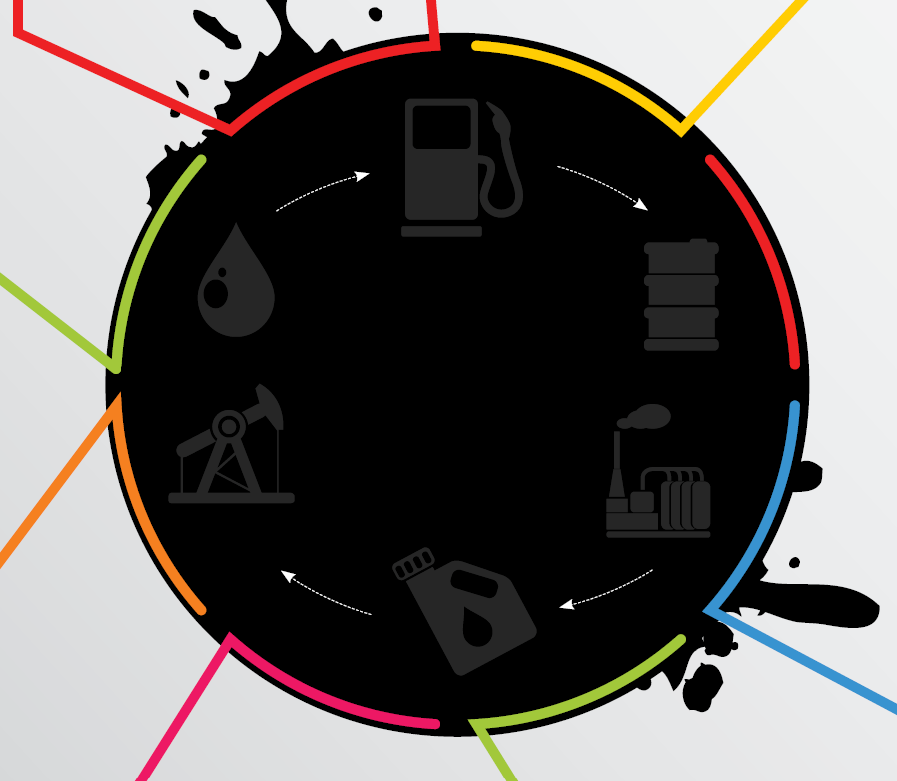
CHEAT SHEET
- Renewable opportunities. With the drop in oil prices, Middle Eastern nations dependent on energy exports are diversifying their energy sources and economies.
- An economic détente. The lifting of economic sanctions on Iran opens up the Middle East’s second-largest consumer market.
- Proceed with caution. Entering a market that has been sanctioned for three decades is tricky, and requires local knowledge and partnerships.
- Lingering restrictions. Non-US companies are still prohibited from dollar transactions with Iran, making the Euro the currency of choice for business in Iran.
In recent months, crude oil prices fell from a high of US$114 per barrel in June 2014, to about US$30. This is the lowest price in 14 years, and it has left multiple oil producing nations in the Middle East scrambling for solutions to their national deficits. For example, Saudi Arabia derives 88 percent of its state revenues from oil sales. As a result, Saudi Arabia had a budget deficit of almost US$100 billion for 2015, and the International Monetary Fund has warned that it will run out of money in five years if it does not significantly tighten its belt. Saudi Arabia has raised retail vehicle gas prices by 50 percent to eliminate subsidies, but such a step does not address its unprecedented deficit. Oil companies such as BP and Shell have cut back on billions of dollars of investment and thousands of workers are now unemployed. In the United States, oil analysts have argued that oil producers cannot maintain oil production at prices below US$30 a barrel.
The decline in oil prices has been influenced by a number of factors, including Saudi Arabia’s increased production of oil which has resulted in an artificially higher supply than demand. Iran has also undergone the first stages of the removal of certain economic sanctions applicable to it, providing it with the prospect of increasing its oil production thus putting further downward pressure on oil prices. But oil sector challenges also produce opportunities in other sectors. Such sustained low oil prices have created the impetus and the opportunity for the diversification of the economies of oil producing countries in the Middle East.
In this article we explore some of the new diversification opportunities available to certain oil producing countries in the Middle East as a result of decreasing oil prices. Opportunities such as diversifying income sources, diversifying energy sources, private-public partnerships, and the promotion of entrepreneurship, all of which foretell the future ingredients of the economies of such countries. We have already started seeing the impact of the decline of oil prices on several sectors of the economy including legal and professional services in general, and how the in-house legal community is coping with the new paradigm of doing more with less.
Diversifying income sources
Countries in the Middle East have been seeking alternatives to oil (and gas) to enable them to diversify their sources of income. Income diversification strategies take on different shapes in the various oil producing countries in the Middle East:
United Arab Emirates (UAE)
The UAE has aggressively diversified its economy with revenues from the oil and gas industry equating to approximately 30 percent of gross domestic product (GDP) in 2015. Dubai and the UAE have become a hub for doing business with Asian, African, Middle Eastern, and Commonwealth of Independent State (i.e., ex-Soviet) countries. A consequence of such income diversification strategy is that the UAE’s hospitality market is predicted to increase by a massive 67 percent in revenue to US$7.5 billion in 2016 (an increase from US$4.5 billion in 2011), as visitor demand increases and new hotel supply enhances growth of the tourism sector. A report produced by the World Travel and Tourism Council states that the UAE accounts for 41 percent of total investment in the travel and tourism sector in the Middle East.
UAE also intends to introduce value added tax by 2018. In addition, Dubai has implemented indirect taxes through several means including road tolls, housing fees on electricity, and water bills and municipality fees on restaurant and hotel bills.
Having been chosen to host Expo 2020, Dubai in the UAE has also seen the re-launching of some of its major projects and the announcement of significant new projects. Expo 2020 alone is predicted to generate over US$100 billion in foreign investment and generate almost 300,000 new jobs: yet another income diversification strategy.
Finally, healthcare in the Middle East is currently in a period of both growth and change. For example, the UAE has been forecasting a larger number of medical tourists from as early as 2009, when the region experienced an increase in demand for fertility clinics and the UAE Cabinet Resolution number 36 of 2009 was implemented, regulating the same. This resolution allowed for medical centers to preserve and freeze excess embryos and regulated the licensing of private clinics and specialists to offer such services. Prior to this resolution’s implementation, only government hospitals and clinics could offer such services. This resulted in an increase in the number of specialists setting up clinics in the UAE and a large influx of medical tourists. At the same time, the region experienced an increase in the number of medical insurance schemes being offered — providing more sophisticated and broader coverage. A notable focus in the UAE has been the government initiative to ensure that all residents have compulsory medical coverage. The Emirate of Abu Dhabi in the UAE saw mandatory health coverage for all its residents in 2006, with other emirates following suit.
Given such initiatives, in October 2015, Dr Layla Al Marzouqi, director of health regulation at the Dubai Health Authority (DHA) stated that over a quarter of a million medical tourists visited Dubai, UAE in the first half of the year and this number was to rise by 12 percent in the year 2016, with a large number coming for fertility and cosmetic treatments. As a result, there is a higher demand for medical centres and medical service providers as healthcare spending in the UAE continues to increase and is expected to increase at a rate of 6.9 percent per year to US$19.6 billion by 2018. Simultaneously, the healthcare sector is developing by making technological advancements in equipment usage and staff training. The manner in which healthcare projects are being financed is also changing and there is an increased emphasis on public-private partnerships (PPP).
Iran
The lifting of certain economic sanctions relating to Iran will unleash significant spending (given its access to over EUR50 million of its previously frozen assets) and opportunities in many sectors of the economy. As an example, Iran has mineral reserves (zinc, copper, iron ore, uranium, and silver) worth US$750 billion and a domestic auto industry with significant potential to sell over 1.5 million cars annually. It will also open the Middle East’s second largest consumer market, with a population of 80 million (over half of which are under the age of 30). This population comes with significant pent-up demand for goods and services, ranging from electronics to foods and beverages. Plans are also in place for new railways and metro lines as well as upgrading existing ports and airports. Iran’s economic diversification is already underway — whether forced by decades long sanctions or brought about by the opportunities revealed by the lifting of certain sanctions recently.
Saudi Arabia
Saudi Arabia’s challenge of diversification is significant given that 88 percent of its state revenues are from oil. Travel and tourism in Saudi Arabia generated 603,000 jobs in 2014, which accounted for only 6.2 percent of total employment in the country. This figure is predicted to rise to 1,691,000 jobs, equating to 12.8 percent of total employment by 2025, according to a report by the World Travel and Tourism Council in 2015. Such travel and tourism primarily centers around visiting the holy site of Mecca. However, major further diversification strategies are required in minerals and other sectors to mitigate its lost revenues due to low oil prices and, as previously discussed, to address its significant budget deficit. Saudi Arabia has recently announced that it intends to create a US$2 trillion sovereign wealth fund to help the country shift from oil. The country is also planning to sell shares of the state-owned energy company, Saudi Aramco, and transform it into an industrial conglomerate.
Kuwait
Kuwait’s income diversification strategy has focused on PPPs. Kuwait is developing almost all of its major non-oil projects on a PPP basis in order to reduce government spending. The Kuwait Authority for Partnership Projects (KAPP) oversees all PPP projects and serves as the body responsible for PPP project implementation. KAPP has initiated projects in the areas of transportation, real estate development, power, health, education, water, wastewater management, and solid waste management. By way of example, two of the projects currently overseen by KAPP are the Kuwait National Rail Road and Metropolitan Rapid Transit System. These projects have a combined budget of US$17 billion and are due to be completed by 2028. The national railway is proposed to connect Kuwait with neighbouring countries as well as to an underground rail network for the metropolitan area.
Qatar
Qatar’s largest recent diversification strategy is the upcoming 2022 FIFA World Cup. For a small population of only 2.2 million Qatari nationals, such a strategy is a significant undertaking. The tournament is predicted to boost total infrastructure projects to US$100 billion. Direct investments worth several billions of dollars will be made in Qatar to build soccer stadiums and other related facilities. Health and education have also been identified as major sectors for development in the country and constitute 72 out of almost 200 projects. Reports state that roads, sewage, and other basic infrastructural development projects have also been given priority.
Diversifying energy sources
Diversification of energy sources for oil producing countries has a direct impact on the region’s attempts to diversify its economy away from oil. One such country is the UAE which is now actively seeking to establish direct alternatives to oil. Such alternatives, or diversified energy sources, include renewable energy, coal-fired power generation facilities, and nuclear power projects.
Renewable energy
While crude oil remains one of the largest primary sources of energy, it is predominantly used to produce transportation fuels. Renewable energy such as solar, geothermal and wind energy, on the other hand, is used to generate power and electricity.
The UAE Ministry of Foreign Affairs produced a Renewable Energy Roadmap in mid-2015 which acknowledges the International Renewable Energy Agency (IRENA) and their adoption of sustainable energy resources by 2030. IRENA supports countries in the Middle East in their transition to a future run by sustainable energy, promoting many forms of renewable energy including: bio-energy, geothermal energy, hydropower, ocean, solar, and wind energy. The report forecasts that a 10 percent share of renewable energy in the total energy mix could generate annual savings of US$1.9 billion by 2030 in addition to generating new industries, jobs, and adding to diversification strategies. In the UAE, renewable energy is becoming cost-competitive for the first time as new technologies are introduced.
Coal plants
Two coal projects have been proposed in the UAE to diversify the supply of energy sources. One project has been proposed in Ras Al Khaimah, UAE and the other in Dubai, UAE. The Dubai project is the most advanced and is in collaboration with the Dubai Electricity and Water Authority.
Nuclear power project
The UAE has steadfastly pursued civilian nuclear power projects over the past seven years by enacting legislation and pursuing its nuclear power development strategies. It has formed the Emirates Nuclear Energy Corporation which was established as part of the Barakah Nuclear Power Project under Abu Dhabi Law 21 of 2009, and during the same year, it enacted UAE Federal Law 6 of 2009 Concerning Peaceful Uses of Nuclear Energy. It is projected that the Barakah Project will provide approximately 25 percent of the UAE’s electricity needs by 2020.
Lifting of (secondary) sanctions on Iran
The legal landscape for doing business in Iran has changed significantly in the past seven months. On July 14, 2015, the P5+1 (the United States, the United Kingdom, Germany, France, China, and Russia), the European Union, and Iran agreed and signed a Joint Comprehensive Plan of Action (JCPOA) contemplating the easing of certain Iran related sanctions. On October 18, 2015, Adoption Day, the JCPOA came into effect and signatories began embarking on the steps necessary for implementation of the JCPOA. Recently, on January 16, 2016, and after the International Atomic Energy Agency’s verification of Iran’s commitments under the JCPOA, the United Nations, the European Union, and the United States ceased the application of sanctions relating to certain sectors of business activity with respect to Iran (i.e. no longer restricting non-US persons from engaging in the following activities) including:
- Finance and banking;
- Insurance;
- Oil, gas, and petrochemicals;
- Shipping and ship building;
- Transport;
- Gold and other precious metals, bank notes, and coinage;
- Other metals;
- Automotive sector;
- Software; and
- Dealings with certain previously prohibited individuals and entities.
In subsequent years, further existing sanctions shall cease upon verification and compliance pursuant to the JCPOA (or certain sanctions may “snap back” due to non-compliance).
UNITED STATES SANCTIONS
It is important to note that the US sanctions on Iran restricting US persons from dealings related to Iran (“US Primary Sanctions”) continue in full force and are not affected by the JCPOA (as opposed to the US sanctions regime concerning non-US persons’ dealings related to Iran (“US Secondary Sanctions”); such US Secondary Sanctions largely ceased to apply as of January 16, 2016, as contemplated by the JCPOA and as discussed above). Most interestingly though, a foreign entity owned or controlled by a US entity may now engage in transactions, directly or indirectly, with the government of Iran or any person subject to the jurisdiction of the government of Iran (pursuant to “General License H” as stipulated by the Office of Foreign Assets Control of the US Department of the Treasury (OFAC)), which activities were all previously prohibited. Also, US persons may now apply to OFAC for a license for the sale, lease, or servicing of commercial passenger aircraft with respect to Iran. However, dealings with US dollar transactions will continue to be effectively prohibited for non-US persons and US persons given that the US Primary Sanctions pertaining to prohibitions on US dollar clearing continue and have not ceased. As a result, the foreign currency of choice in doing business in Iran will likely be the Euro which is not subject to such restrictions.
DOING BUSINESS IN IRAN
Given the above opportunities created by the JCPOA, a primer on doing business in Iran is warranted.
Iran has one of the largest economies in the Middle East, and it has the second largest population in the region, with about 80 million people. Iran ranks second in the world in natural gas reserves, and fourth in crude oil reserves.
The economy is dominated by direct and indirect revenues from the petroleum and natural gas sectors, although the agricultural and service sectors in the country are active, and there has been an increase in the manufacturing and financial sectors as well.
As discussed, Iran had been under a strict international sanctions regime for over three decades, which is now easing given the JCPOA. The opportunities in oil, gas, retail, manufacturing, financial, shipping, and many other sectors are vast. Recent opportunities include the sale of commercial aircraft, the joint venture development of oil and gas fields, investments into the hospitality sector, shipping sector transactions, and dealings with Iran’s private financial institutions. However, an investor must remember that certain Iranian business sectors are subject to entrenched monopolies, duopolies, or other opaque, hard wired business alliances which will be difficult to penetrate. Also, doing business in Iran requires compliance with Iranian business etiquette and traditional cultural norms which are distinctly different. Language skills (Farsi) are also strongly recommended at this very early stage in Iran’s economic re-opening to global markets.
Foreign businesses generally establish a presence in Iran through branches and representative offices. Alternatively, certain foreigners elect to conduct business through a limited liability company or a private joint stock company, often times with seasoned local partners.
In addition, the government of Iran has established various free zones, regulated by relevant free zone authorities. Free zones allow foreign companies to form wholly owned subsidiaries. Certain free zones like the Kish Free Zone offer a 15-year tax exemption to all investors and protections for foreign investment. Other incentives include an exemption from customs duty on certain imported products.
As a further incentive for foreign investment in Iran, the Foreign Investment Promotion and Protection Act allows repatriation of sales related profits for foreigners; provides for fair compensation in the event of nationalization; allows for international arbitration in the event of disputes; and provides for other investment incentives for foreigners.
The JCPOA contains the implied promise of business opportunities in Iran for many foreign businesses and the exciting prospects of improving the business capabilities and infrastructure of a nation. However, entrenched Iranian business alliances, traditional business culture, language requirements, and distinctive laws and regulatory practices may serve as hurdles. Such opportunities (and hurdles) also carry with them the hope of increased cultural and political understanding through mutual business prosperity.
Public-private partnerships: the alternative to government funding
The use of PPPs has become so strategic for governments that it can be put forth as a standalone economic diversification strategy. PPP projects increase the availability, quality, and resilience of infrastructure and public services projects, while sharing the risk with the private sector. As discussed above with respect to Kuwait, PPP projects allow for a government to reduce its capital commitment while joint venturing with the private sector.
Dubai has embarked on the path of PPP by introducing Law 22 of 2015 on the Organization of Public-Private Partnership to encourage the private sector to participate in the development of projects with the hope of increasing investment in various fields. Abdul Mohain Younes, CEO of Strategy and Corporate Governance at Dubai Roads and Transport Authority, recently said that “communities benefit from PPPs as they enable the public sector to provide much-needed infrastructure that might not otherwise be forthcoming due to budgetary constraints or lack of expertise.” Due to the decrease in the price of oil, governments in the Middle East are being forced to consider more innovative strategies such as PPP, which share responsibility with the private sector in addition to creating a vested interest with the private sector in the completion of a project.
Rise of entrepreneurship
The Middle East has long been on the private equity radar and the private equity and venture capital industries in the Middle East have continued to prosper, recently reaching their highest levels since 2008.
The reduction in oil prices provides an opportunity for start-ups to be noticed by investors who want to step away from investing in the oil and gas industry or look for efficiencies in new technologies or methods. Such investment in intellectual capital can serve as the engine that drives the future economy of the region and promotes an increase in business and academic research, development, and innovation.
By way of example, the Government of Dubai’s Chamber of Commerce manages a program called “Tejar Dubai” which was implemented to identify and develop entrepreneurs. The program provides in class learning, training, and support as well as networking opportunities. Small and medium enterprises (SMEs) contribute an estimated 45 percent of the nominal GDP in Dubai. As a result, the Government of Dubai has made promoting entrepreneurs and SMEs a top priority in its diversification strategy.
How to work smarter in-house
Budgetary pressures on MENA in-house teams and fluctuating work level demands are prompting these teams to be more visible and to demonstrate value to the business. In a discussion sponsored by LexisNexis and ACC Middle East in Dubai in April 2016, a panel of in-house counsel discussed how in-house teams can achieve efficiencies in service delivery and contribute to their businesses. Following are the top themes that emerged from the discussion.
- Analyze current work practices and processes and document where improvements and additional resources are required.
- Spend — how much is currently being spent on external counsel?
- Identify knowledge gaps — categorize the work done by in-house teams in terms of work requiring transactional versus complex knowledge, internal business versus external legal knowledge, and the time required to complete the work. This will highlight additional internal resources in-house teams may require and work that should be outsourced to external counsel.
- Technology — where and how can technology be deployed to improve the work process.
- Determine value to the business. In-house teams need to identify how to resource work by determining “high value work” and the time required to complete this work. They should focus their time on high value work requiring high time to complete versus low value work requiring high time.
- Know when to outsource legal work. High-level strategic work — which typically involves the C-suite of senior management and the board — is usually handled by the general counsel. For other types of legal work including project based work and ongoing business-as-usual work, in-house teams need to consider the volume of work involved and internal versus external cost before they decide to outsource the work or keep it in-house.
Impact on the in-house legal community
While falling oil prices may seem to have a positive impact on diversifying energy and income sources, the in-house legal community is expected to deal with a much broader range of issues as businesses attempt to manage legal risks and put a lid on the cost of legal services. In recent years, we have seen an increase in the hiring of in-house legal lawyers and staff by midsize companies with the expectation that they would handle a substantial part of the in-house demand for legal services. This pressure to minimize legal costs and take back more legal work that was previously outsourced to outside counsel continues to be experienced by the MENA in-house community. In the real estate sector, for example, both investors and developers are considering dispute resolution and settlement options outside the courts. This shift of workload whereby the in-house legal community is now responsible for drafting settlement documents, conducting meetings, and carrying out settlement negotiations have added significantly to its routine workload. In order to compete and stay at the forefront of its profession, the in-house legal community needs to demonstrate a high degree of dynamism, knowledge, and innovation as well as the ability to handle complex, and very often multijurisdictional, legal transactions. The luxury of being able to appoint the best suited external legal consultant is now becoming a scarce commodity.
Conclusion
The budgets and finances of oil rich nations such as Iran, Saudi Arabia, UAE, Qatar, Bahrain, and Kuwait have been strained given the volatility of oil prices. Diversification strategies such as energy diversification, income diversification, participation in public-private partnerships, and the promotion of entrepreneurship and intellectual capital can herald a new era: a new life after oil.
Further Reading
Embassy of the UAE Washington DC, UAE Economy, 2015.
Business Pulse, UAE tourism sector to generate 67 percent growth in revenue by 2016, February 13, 2016.
The Report: Abu Dhabi 2014, On the up, the government provides strong administrative and financial backing, page 282
UK Department of Health, 2015, Overview and Annual Review, page 14.
CNN.com, Iran-sanctions-economy opportunity, January 16, 2016.
Forbes, What potential does Iran hold for the automotive industry? January 19, 2016.
RT.com, “Saudi Arabia to set up US$2 trillion mega-fund for post oil era”, April 2016.
MEED Yearbook, 2016, Tough year ahead for contractors, page 34.
Train Times Clyde & Co. page 3, February 2013.
Ministry of Development, Planning and Statistics of Qatar, 2016.
MEED Yearbook, 2016, Tough year ahead for contractors, page 34.
Deloitte, MENA Private equity and venture capital report, 2014.





